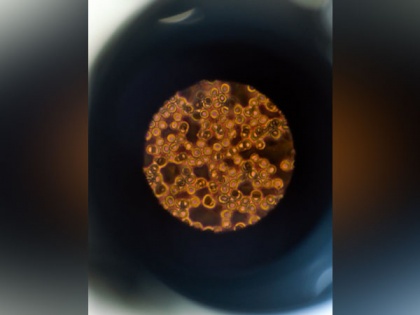Brown fat may protect against chronic diseases: Study
By ANI | Published: January 6, 2021 06:52 PM2021-01-06T18:52:32+5:302021-01-06T19:00:07+5:30
A study of 50,000 people conducted by Rockefeller University finds that brown fat in human body may protect against numerous chronic diseases.

Brown fat may protect against chronic diseases: Study
A study of 50,000 people conducted by Rockefeller University finds that brown fat in human body may protect against numerous chronic diseases.
According to a new study published in Nature Medicine, brown fat is that magical tissue that anyone would want more of. Unlike white fat, which stores calories, brown fat burns energy and scientists hope it may hold the key to new obesity treatments. But it has long been unclear whether people with ample brown fat truly enjoy better health.
The research offers strong evidence with among over 52,000 participants, those who had detectable brown fat were less likely than their peers to suffer cardiac and metabolic conditions ranging from type 2 diabetes to coronary artery disease, which is the leading cause of death in the United States.
The study, by far the largest of its kind in humans, confirms and expands the health benefits of brown fat suggested by previous studies. "For the first time, it reveals a link to lower risk of certain conditions," said Paul Cohen, the Albert Resnick, M.D., Assistant Professor and senior attending physician at The Rockefeller University Hospital.
Although brown fat has been studied for decades in newborns and mals, it was only in 2009 that scientists appreciated it can also be also found in some adults, typically around the neck and shoulders. From then on, researchers have scrambled to study the elusive fat cells, which possess the power to burn calories to produce heat in cold conditions.
Large-scale studies of brown fat, however, have been practically impossible because this tissue shows up only on PET scans, a special type of medical imaging. "These scans are expensive, but more importantly, they use radiation," saidTobias Becher, the study's first author and formerly a Clinical Scholar in Cohen's lab.
In collaboration with Heiko Schoder and Andreas Wibmer at Memorial Sloan Kettering, the researchers reviewed 130,000 PET scans from more than 52,000 patients, and found the presence of brown fat in nearly 10 percent of individuals. Cohen noted that this figure was likely an underestimate because the patients had been instructed to avoid cold exposure, exercise, and caffeine, all of which were thought to increase brown fat activity).
Several common and chronic diseases were less prevalent among people with detectable brown fat. For example, only 4.6 percent had type 2 diabetes, compared with 9.5 percent of people who did not have detectable brown fat. Similarly, 18.9 percent had abnormal cholesterol, compared to 22.2 percent in those without brown fat.
Moreover, the study revealed three more conditions for which people with brown fat have lower risk: hypertension, congestive heart failure, and coronary artery disease -- links that had not been observed in previous studies.
Another surprising finding was that brown fat may mitigate the negative health effects of obesity. In general, obese people have increased risk of heart and metabolic conditions; but the researchers found that among obese people who have brown fat, the prevalence of these conditions was similar to that of non-obese people.
The actual mechsms by which brown fat may contribute to better health are still unclear.
The role of brown fat is more mysterious in other conditions like hypertension, which is tightly connected to the hormonal system. "We are considering the possibility that brown fat tissue does more than consume glucose and burn calories, and perhaps actually participates in hormonal signaling to other organs," Cohen said.
The team plans to further study the biology of brown fat, including by looking for genetic variants that may explain why some people have more of it than others potential first steps toward developing pharmacological ways to stimulate brown fat activity to treat obesity and related conditions.
( With inputs from ANI )
Disclaimer: This post has been auto-published from an agency feed without any modifications to the text and has not been reviewed by an editor
Open in app